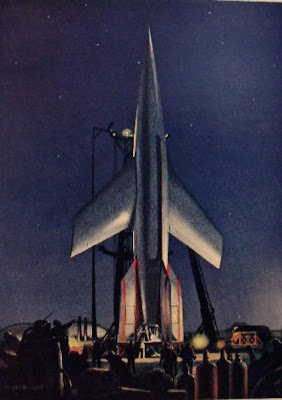Have you seen Terry Gilliam's latest film, "The Imaginarium of Dr. Parnassus?" No? Maybe you should have. The art direction in that film was brilliant.
It's about a Tibetan monk (Christopher Plummer) who centuries ago made a deal with the devil where he agreed to give the devil his first born in exchange for immortality. Close to our time he finally has a daughter and discovers he loves the kid so much that he can't bear to give her away, so he and his daughter hide from the devil in a traveling stage show.
At least, I think that's the plot. Maybe I misunderstood it. Plot isn't one of Gilliam's strong points.
I wonder why Gilliam hasn't done "Alice in Wonderland"? It has a popular ready-made plot, and it's loose enough to allow lots of invention. Maybe even Alice is too restrictive for him. Maybe the muse is only kind to him when he makes films by the seat of his pants, taking advantage of whatever enthusiasm grabs him at the moment.
I like the theatricality of the film. Whatever its ostensible plot, the film is really about the nature of theater, and the people who keep it alive. You don't choose theater, it chooses you. You come under its spell and you find that no other vocation works for you.
Most theater people are poor. It's not really a good living for most of them. A lot of them aren't really all that talented. They simply find that they can't bear to do anything else.
After Rome fell Europe went for a thousand years without theater. There were travelling religious shows, and that was it. Theater as we know it was only resurrected just before Shakespeare's time.
I can only imagine what life was like for the traveling players. Drafty, crowded, wagons (above) full of costumes and props, and the necessities of life; it couldn't have been much fun. They probably had to supplement their income with prostitution, fortune telling, and the sale of fake medicine and amulets. I imagine that they had to sleep in shifts using their costumes for mattresses. They probably ended up getting flogged in some places.
Even so they persisted. Theater people stimulated imagination wherever they went, and helped to give Europe its unique cultural identity. The modern world is partly a present handed to us by nameless people who lived short, impractical lives in wagons. I think Gilliam just wanted to acknowledge the gift.
I wish Terry could be won over to good dialogue. The dialogue in his films isn't bad, it's just not as memorable as it could be. The great art direction would be used to better purpose if it were the backdrop for memorable rhetoric like the kind in this scene (above) from "Ed Wood."






















































